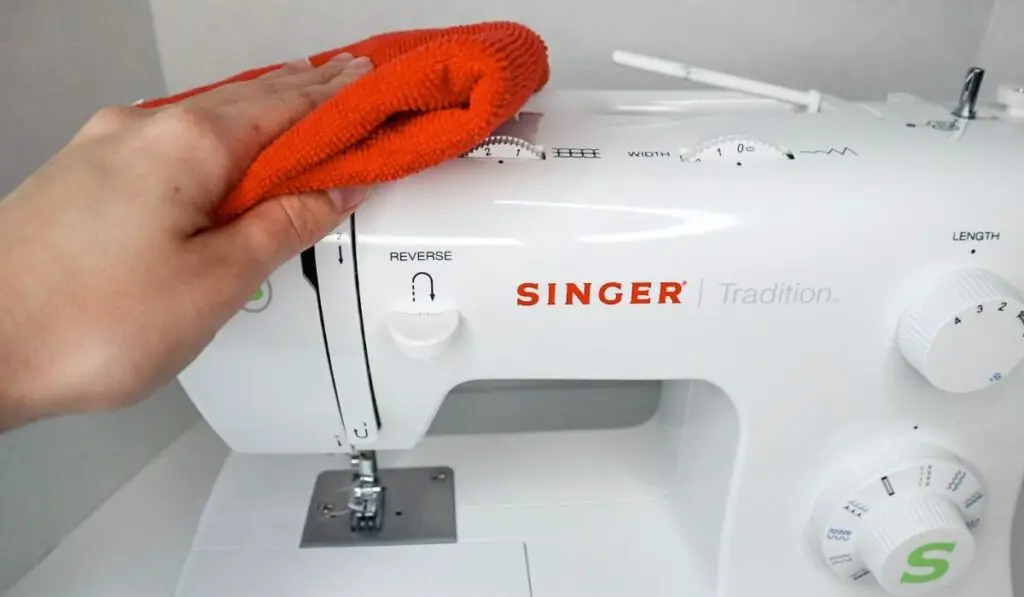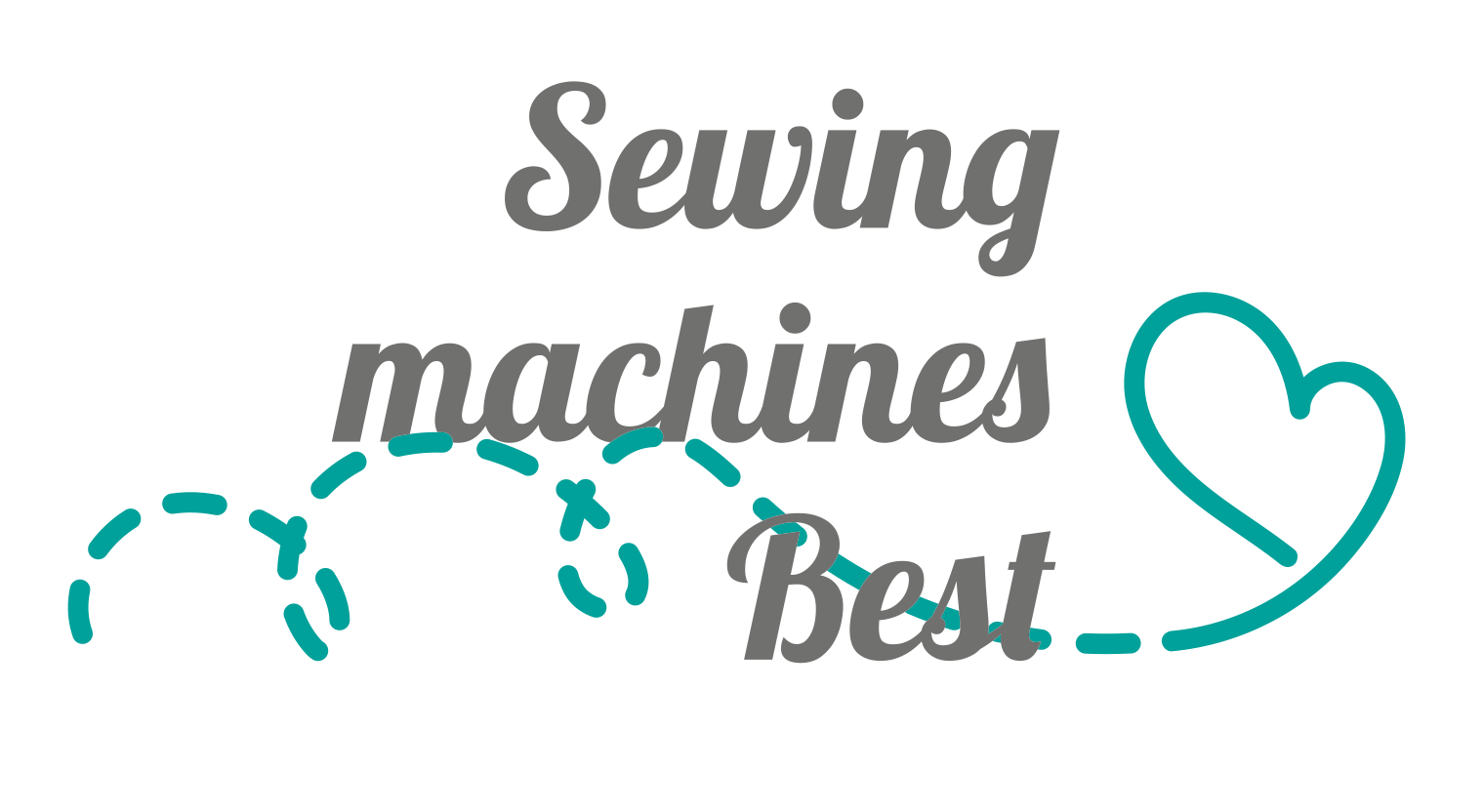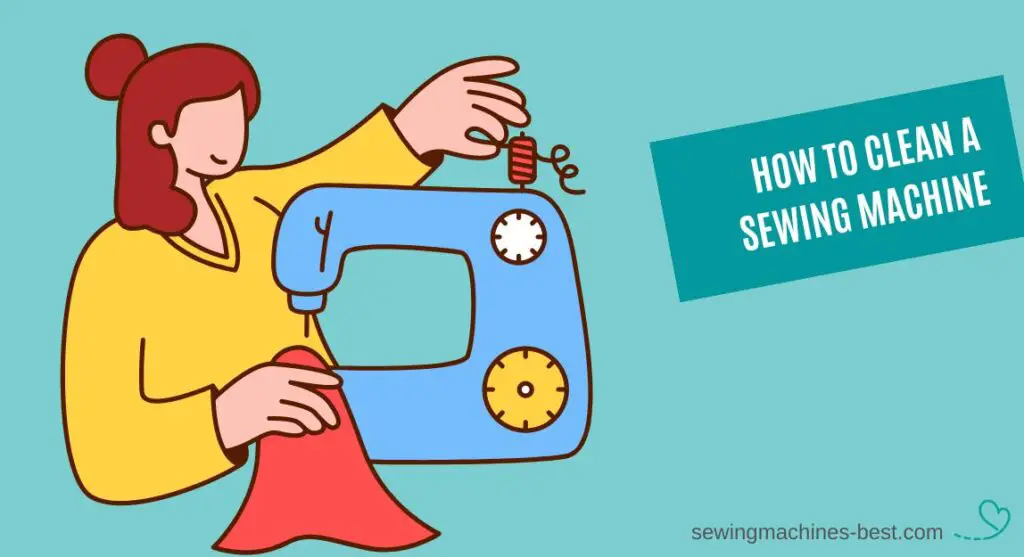When was the last time you cleaned your sewing machine? Regular service is extremely important, and in this article, I will show your how to clean a sewing machine easily.
The care of the sewing machine includes, first of all, cleaning and oiling. If you perform them on time, and regularly, the service life of the machine will last longer and the machine will be working better and running smoothly.
In this article, we’re going to focus on the basic cleanings, oiling, and maintenance that you can do at home.

Contents
- 1 How do you clean and oil your sewing machine?
- 2 7 tips on how to clean a sewing machine
- 3 FAQ
How do you clean and oil your sewing machine?
If you regularly use your sewing machine, then the dustiest place is the bobbin case. Scraps of thread and pieces of materials accumulate here, which can interfere with the movement of the bobbin and your machine can stop running smoothly.

Cleaning of the bobbin case is recommended to be carried out every month. Before starting work, you should carefully read the instructions for the machine, and prepare a brush or comb with a hard pile and a flap of soft fabric.
The algorithm for how to clean a sewing machine looks like this:
Step 1
Disconnect the machine and unplug it from the power source. Whenever you clean your sewing machine, the first thing to do is turn off the power.
Step 2
Remove the needle and the presser foot. Then remove the needle plate to open access to the bobbin case (read the sewing machine manual to see how you can do it). Pull out the bobbin and the bobbin case.
Step 3
Clean the bobbin case by removing threads and dust, and wipe the surface with a soft cloth or a vacuum cleaner.

Step 4
Wipe the surface of the stitch plate.
Step 5
Install the bobbin holder and needle plate in place.
Step 6
At the same time as cleaning, replace the old needle if it has been used for a long time.
Oiling your sewing machine
After you’ve cleaned the sewing machine, you can oil it.
The instructions for the sewing machine will indicate whether it needs oil. Some sewing machine manufacturers use special plastic polymers in modern models instead of metal, which do not need oil. Machines with a metal vertical bobbin are recommended to be oiled at least once every 6 months.

Some sewing machine manufacturers prefer that you take it in for dealer servicing and they’re oiled when you service it
The algorithm for how to oil a sewing machine looks like this:
Step 1. Remove the bobbin
Remove it and the hook and put a tiny bit of oil (one on two drops no more) on the edge of the hook.
Step 2. Put this back into the machine
Take the hook that you’ve oiled and position that back into the machine lining everything up, make sure everything is nice and secure, then you can put the bobbin back in.
Step 3. Stitch test
Run the machine through just to check that you don’t have any oil anywhere. You don’t want to have the oil spoiling your work, so once you’ve cleaned and oiled your sewing machine you’re going to be good to go.
How to transport your machine correctly
As well as cleaning and caring for your machine at home, you’re also going to want to make sure that you transport it correctly.

So, let’s take a little look at that when it comes to transporting or storing your machine.
Below are some recommendations from a sewing machine dealer:
1. Put the presser foot down. On the majority of sewing machines, there is a little bit of a spring, and when the foot is down, the spring is relaxed therefore the foot should be down when the machine is being stored or transported.
2. Put a little bit of fabric underneath the presser foot and then position the foot down with the foot down and therefore the spring relaxed it should prolong the life of that part of the sewing machine.
How often you should get your machine serviced or looked at by a professional
It depends on how often you use your sewing machine.
Different sewing machine manufacturers have different recommendations on how to maintain a sewing machine. In any case, before you start using the sewing machine, read the manual to see how to clean the sewing machine and properly care for it in order to maintain the warranty.

It’s better to get sewing machines serviced every year and I believe that this is the best practice.
It’s good to get a professional to look over them, they can get into areas of the sewing machine that you can’t solve, they can check everything, clean it, oil areas that have icons and it just means that your sewing machine is running at its best.
You also need to consider getting your sewing machine serviced if you haven’t used it in a very long time, if it’s been sitting in a cupboard for several years it is worthwhile getting it serviced before you get it back out and start sewing on it just to make sure that everything is performing as it should be.
What are the 2 materials used to clean the sewing machine?
To clean the sewing machine, it is better to use a lint-free cloth and a vacuum cleaner.
The vacuum cleaner is a perfect tool to keep your sewing machine clean and free of dust and particles. It has a powerful engine that makes short work of any mess.
How do you deep clean a sewing machine?
To deep clean your sewing machine, it is better to contact the service center.
7 tips on how to clean a sewing machine
1. The first tip is to choose a brush. Most machines come with a small brush for a sewing machine. It’s not that great, instead, go and grab a brush or buy yourself a brush for your sewing machine and buy yourself a proper brush, something with a good-sized brush head. You can read more in the article 10 Best Lint Brush For Sewing Machine.
It’s better to use a basting brush from a cooking store or a makeup brush something that you’re going to be able to get into all of the areas of your sewing machine make sure that it’s nice and clean so give it a good clean if you’ve used it for something else in the past and make sure that it isn’t going to shed any fibers or bits of hair onto your sewing machine.
2. The second tip is only to use the sewing machine oil that comes with your sewing machine, don’t use something inappropriate. Remember, you must never oil any plastic areas.
3. You do all the cleaning before you do oiling your machine.
4. Keep on top of replacing your needles, and make sure that you sew with a good quality sharp needle. And also make sure that you pick good-quality threads. Poor quality thread does create more lint and dust in the sewing machine.
5. Remember to unplug your sewing machines when you clean and oil them.
6. Regularly carry out maintenance of your sewing machine in the service.
7. Don’t use canned air on modern sewing machines. When you start blowing your canned air down through there, what happens is there is no place for it to go.
By blowing all that lint and dust and everything else that’s in there, you wind up blowing it up into the interior of the machine, and the only way for you to get it out is just to take your machine completely apart.
So don’t use compressed air to clean a modern sewing machine, unless you plan on taking it apart. You shove all the land up into the mechanisms of the machine, and you’ll cause more problems than you will solve cleaning your machine.
Hopefully that this article has given you some tips and techniques for how to clean a sewing machine.
If you have any questions or want to post any comments, you can post them below.
Thanks for reading!
FAQ
How often should I oil my machine?
Some people say every month you need to oil your sewing machine, but it really depends on how often you use it, so it’s just something to keep in mind. You can also read about oiling in the article How to oil a sewing machine.
How often should I clean my machine?
It depends on how often you use it. So, how often should you clean your sewing machine? It is always best practice to clean your machine before starting each project.

Hi everyone and welcome to my blog!
My name is Liz, and I started sewing when my son was born. First I repaired the holes in children’s pants, then I dared to do more challenging projects like sewing home decor and children’s clothing. Now it is my hobby where I come to rest, let my creativity run wild, and create things that please me and enhance my home.
I would love to help other sewing beginners and enthusiasts through my blog by sharing tips and tricks for this great hobby.

